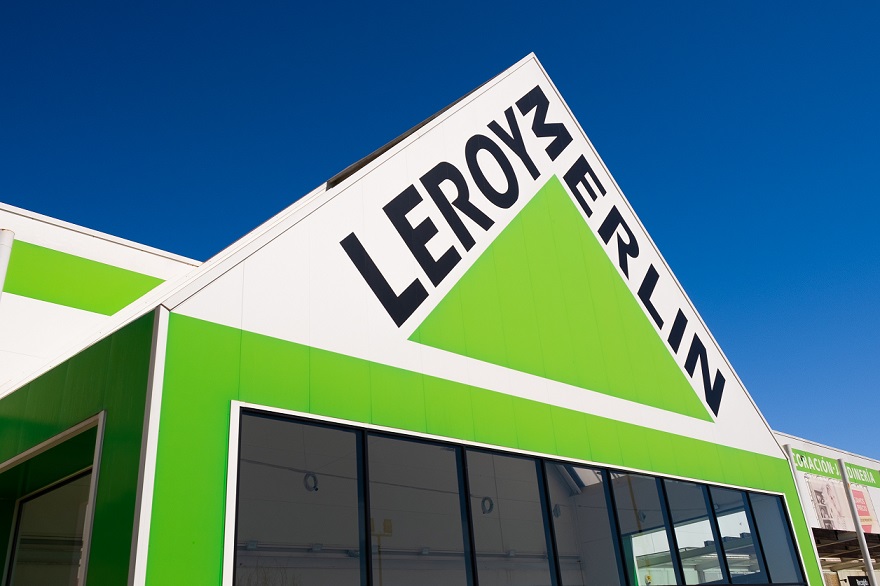Leading home improvement retailer Leroy Merlin Brazil adopts Qlik Cloud and Qlik Catalog to help accelerate growth through reliable data and self-service analytics
Leroy Merlin Brazil has migrated its full analytics efforts to Qlik Cloud – enhanced by Qlik Catalog – to support continued growth through reliable, governed data and self-service analytics.
Leroy Merlin is part of GROUP ADEO, a group of companies dedicated to home improvement covering everything from home renovation and decoration to DIY and kitchen utensils.
The company has over 130,000 employees and supports 42 superstores throughout Brazil, which has seen a significant and continued increase in business due to COVID-19 and the rush for home improvement projects.
Being a longtime user of Qlik Sense, the organization was looking to democratize access to data in order to help more of its in-store and back-office employees make faster and better decisions through self-serve analytics to match the growth that the company was experiencing.
An initial data literacy initiative, suggested and supported by Qlik focusing on the company’s HR and organizational transformation areas, created great interest in providing company analytics access. Leroy Merlin realized that it would benefit from the scale and cost efficiencies of moving to Qlik Cloud to make data available to more of the company’s employees.
Building strategies

J.M. Benedetto, CIO, Leroy Merlin Brazil, said: “Shortly after we completed a technological refresh of our BI (implementation of GBQ + Qlik Sense), we realized that the path of centralization was neither possible nor desirable. While corporate dashboards were essential for aligning different areas into a single strategy, departments needed flexibility.”
In addition to building internal dashboards by the departments themselves, business analysts needed support in ad-hoc investigations. According to Benedetto, Leroy Merlin was no longer limited to building dashboards to monitor the execution of known strategies.
“We also needed to support the construction of new strategies based on experimentation and analytics. We are now prepared to receive analysts on the platform besides the data and management teams. We were looking for a solution that would allow a guarded freedom with a common data model, fine-grained control of data access and full visibility into the analytics built,” said Benedetto.
According to him, another important aspect was the need to implement something that could scale without great effort, which was not the case with the on-premises solution.
“Managing servers took up important time from teams and yet the performance left something to be desired at times,” said the CIO.
Simplicity in deployment
According to Benedetto, the deployment from a technical point of view was quite simple with the data ingestion flow still being done on-premises at the beginning. The team took the opportunity to review the applications with a focus on UX and performance.
“DataViz is not Excel but our users often try to bring their way of working from spreadsheets to Qlik,” he said.
All the underperforming apps were rebuilt in a ‘back to basics’ effort: a dashboard must contain the data to support a related set of decisions and only that data.
Benefits

“We were very satisfied with the Qlik Sense tool and we saw in the SaaS version an answer to the challenges listed. Scale was guaranteed, freeing analytics teams from the burden of managing servers,” said Benedetto.
The cost per user was also reduced, allowing the company to double the number of employees with access to the tool. In addition, the IT team integrated the new version with the internal profile management tool to control access by position.
“We also had collaboration gains with the functionality of co-building applications, where data teams started supporting business analysts in building dashboards,” said Benedetto.
Bendetetto explains that in the midst of hundreds of reports and versions of solutions, it is easy to get lost. The CIO says that Qlik SaaS allows each user to create their collections with the apps that make more sense for their work, creating a personalized vision.
In addition, it’s possible to connect spreadsheets and text files in Qlik for data discovery and point analysis.
“We have seen rapid growth in our business and we need our organization to respond effectively to demands so we can continue to deliver customer satisfaction,” said the CIO.
Qlik Catalog
As Leroy Merlin enables more of its employees with data, the company wants to ensure that everyone is accessing and using relevant and governed information that they can trust.
The organization has adopted Qlik Catalog to help provide the business with on-demand access to analytics-ready data, simplifying and accelerating the profiling, organization, preparation and delivery of trustworthy, actionable data.
Eduardo Kfouri, VP and General Manager, Qlik Latin America, said: “Organizations such as Leroy Merlin have seen tremendous value in leveraging Qlik’s cloud analytics to face the challenges of the COVID-19 pandemic while setting themselves up for continued growth.
“We look forward to working with Leroy Merlin to help them continue to democratize the access and use of data across the organization to support their increase in data-driven decision-making.”
Next steps
About the future of the partnership, Benedetto explains that the company still has three important steps in the process of migrating to SaaS.
The first will be a technical step to migrate the ingest stream to SaaS – this will allow the shutdown of two more servers, completely eliminating the on-premises installation.
The second step is to make the data dictionary available in the Qlik Data Catalog because, according to the director, although the current tool allows business analysts to build dashboards and reports, many face a lack of understanding of the data model.
The CIO explains that there are thousands of different indicators and attributes, and users have difficulties in understanding the calculation of certain indicators or the filters to be applied to certain attributes.
“As a Data Catalog, we will bridge the gap between the corporate data dictionary and Qlik reports,” said Benedetto.
The last step is to use the NLP functionality to query the database by users. According to Benedetto, there are a lot of employees in stores with no technical training for whom the interface of a DataViz tool is intimidating.
Therefore, it will be a great benefit when employees ask questions directly to the tool. The team is just waiting for the Qlik solution to be available in Portuguese.
Finally, Benedetto says he’s already seen great value in using Qlik in his core business.
“The self-service capabilities of Qlik’s cloud platform are a great fit for us to help spread data throughout the organization so our employees can collaborate on decision-making to drive our growth,” concluded the CIO.
Click below to share this article

